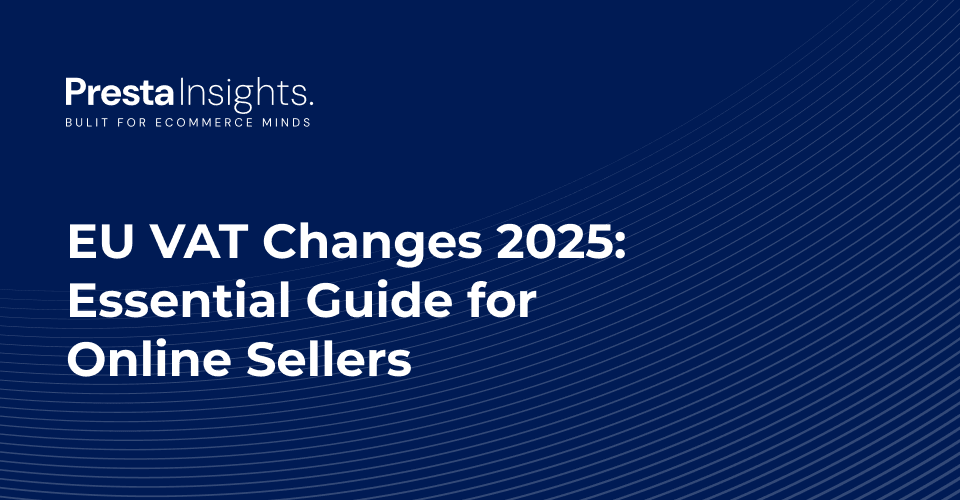Introduction
The EU Member States regularly bring out changes in the Value Added Tax (VAT) regulations to facilitate cross-border trade; it is meant to check tax fraud and facilitate a quick pace with the currently emerging digital economy. Knowing all the latest updates herein becomes homework for an online seller not to fail in compliance and penalties or any drawbacks to smooth transactions for a seller within the EU market.
The significant upcoming changes to VAT in 2025 will affect VAT charged on goods and services sold through eCommerce businesses across the EU. This information highlights the fact of everything that will change in VAT with regards to the preparations made by online sellers.
Important VAT Changes in the EU
1. Introduction of Digital Reporting Requirements (DRR)
Currently, the EU is moving towards real-time digital reporting aimed at increasing tax transparency and reducing VAT fraud. The new Digital Reporting Requirements (DRR) will be an automation of reporting based on transactions while doing away with the requirements for the traditional VAT returns.
What this means for online sellers:
Real-time or near real-time reporting of intra-Community cross-border transactions will become mandatory.
Standardized e-invoicing will be mandatory in a majority of EU countries.
More compliance obligations will lead to the need for upgrades in accounting and invoicing software.
2. Changes to VAT OSS and VAT IOSS
The VAT OSS and IOSS schemes were designed to ease VAT compliance for international sales. This time, the above modifications will make it even simpler and flexible in the future.
Implications for sellers:
Flexible usage in the different transaction types under OSS.
Streamlined processes on how to cure errors in VAT reporting.
A potential new requirement regarding marketplaces acting as deemed suppliers.
3. Adjustments to Distance Selling Thresholds
Presently distance selling thresholds vary from country to country, although the EU has contemplated a common, lower threshold that will mandate VAT registration.
Effect on online sellers:
Small businesses will sooner have to register for VAT in many EU countries.
Greater burden in administration to non-EU sellers shipping to customers in the EU.
May require automated VAT calculations for different rates.
4. More Stringent VAT Rules on Digital Services
The EU has set about changing VAT rules concerning various digital services such as software, streaming, and online courses.
They include the following key changes:
Simplified registration and reporting processes.
Changes in VAT rates for special digital services.
More stringent matters when it comes to distinguishing B2B and B2C regarding VAT compliance.
5. Harmonization of VAT Rates
The EU is likely to further harmonize VAT rates to mold a more uniform tax landscape.
Effects on online sellers:
Some countries could further reduce or raise VAT for specific categories of products.
Sellers have to monitor rates to align them with the appropriate pricing strategies.
More transparency in cross-border eCommerce pricing.
Preparation for Online Sellers
In order to smoothly deal with VAT changes, online sellers should take some measures in advance:
✅ Review Your VAT Compliance Strategy
Make sure that your business is VAT-compliant in all EU markets where it operates. Some VAT experts could also be consulted to see how the new rules may affect you.
✅ Update Your Accounting and eCommerce Software
Invest in systems that give real-time VAT reports, automated invoice generation, and the right tax rates.
✅ Get Registered for OSS or IOSS if Not Done Already
They simplify VAT requirements on cross-border sales and ease up on administrative work.
✅ Advise on VAT Rate Changes
Keep the ears to the ground for any announcement regarding VAT rate changes from E.U. tax authorities so that they can adjust pricing and financial planning accordingly.
✅ Train Your Team and Partners
Make sure that the finance, compliance and logistics teams are made cognizant of the changes, as disruptions may take place in operations.
Conclusion
What is coming are new VAT changes in the E.U. that aim towards making tax compliance easier and reducing tax fraud, thereby establishing a level playing field for eCommerce. These are bigger hindrances that shut the door on online sellers.
Keeping oneself up-to-date, using automated compliance tools, and advising on best practices for VAT compliance will put online sellers in a good position to weather the storm while expanding their enterprises in the EU market.



